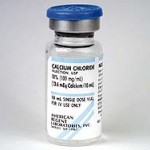
I rank Activated Charcoal 29 on my list of 33 Drugs.
I must confess that in my 22 years riding ambulances, 18 as a paramedic, I have never given Activated Charcoal to a patient. Certainly there had to have been a few in the crowd who could have benefited, and certainly quite a number eventually got the charcoal in the hospital.
Our indication is for toxic ingestions in concious patients.
There are any number of reasons I haven’t given it.
1. We cannot give it on standing orders, but must call for on-line control.
2. The patient is likely to resist drinking it.
3. We don’t do NG tubes.
4. There is the making a mess in your ambulance factor.
5. Our transport times are usually not extended.
6. There is some medical controversy about giving activated charcoal to pediatrics.
7. Just not thinking about it.
I am not using the excuses that a) I couln’t find it or b) it was expired.
I just ran a little stopwatch test and was able to find the Activated Charcoal in less than 15 seconds in my ambulance right where I thought it was (okay, I wasn’t certain). It doesn’t expire for a couple months so good that I am writing this now and not in April.
***
I did some literature searches on the activated charcoal and found no convincing evidence either way. One one hand, prehospital administration makes the treatment available to more patients who would otherwise not meet the 1 hour time constraint, but on the other there is also the risk of aspiration and no clear cut complelling evidence that it makes a huge difference in outcome.
Here is a summary from one review (Activated charcoal for pediatric poisonings: the universal antidote?):
SUMMARY: If used appropriately, activated charcoal has relatively low morbidity. Due to the lack of definitive studies showing a benefit in clinical outcome, it should not be used routinely in ingestions. AC could be considered for patients with an intact airway who present soon after ingestion of a toxic or life-threatening dose of an adsorbable toxin. The appropriate use of activated charcoal should be determined by the analysis of the relative risks and benefits of its use in each specific clinical scenario.
Here are few more articles to check:
The potential role of prehospital administration of activated charcoal.
Prehospital activated charcoal: the way forward.
***
I also came across this bit of Activated Charcoal EMS humour on the internet:
Top Ten Things to Do With Activate Charcoal
***
While for now I am listing Activated Charcoal low on my list, I do promise to discuss its possible use with some doctor friends and look more critically at whether or not I am missing opportunities to help some of my patients.
***
Activated Charcoal
Class: Adsorbent
Action: Adsorbs many drugs and poisons in the GI tract
Indication: Toxic ingestions – not caustics or pure petroleums
Contraindication: None for emergency use
Dose: 30-50-100 grams
Route: PO – usually in liquid form to drink
Pedi dose: 1-2 grams/kg

